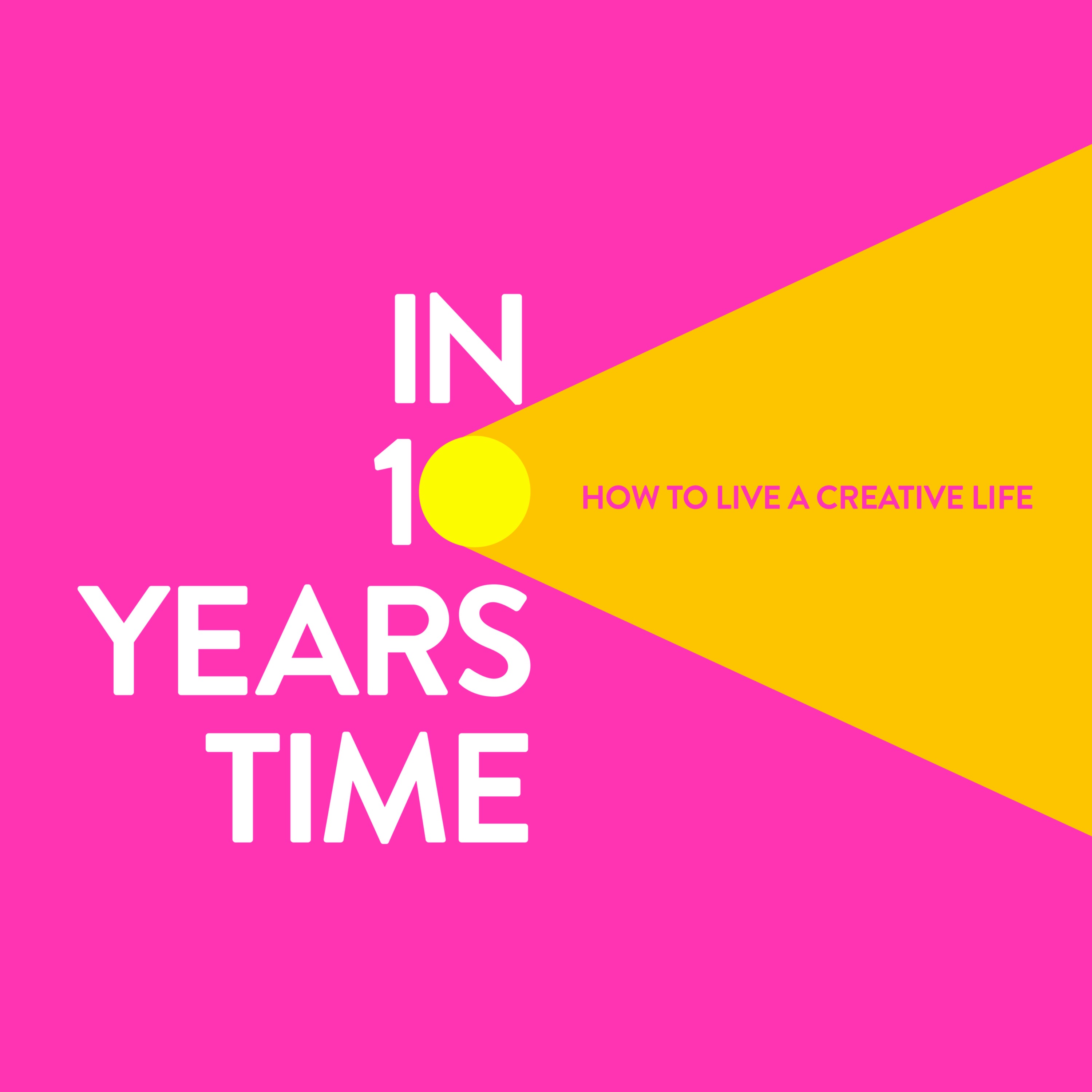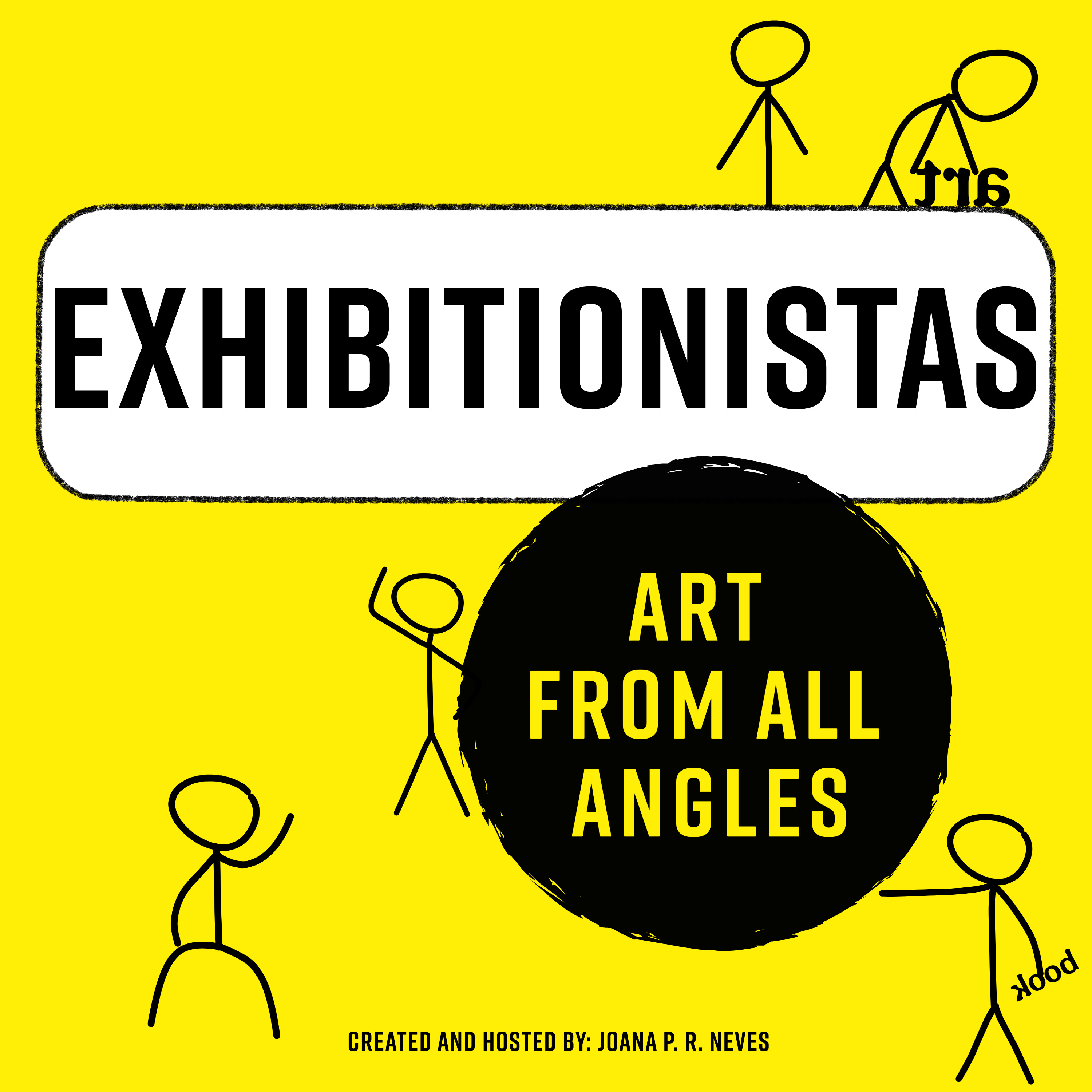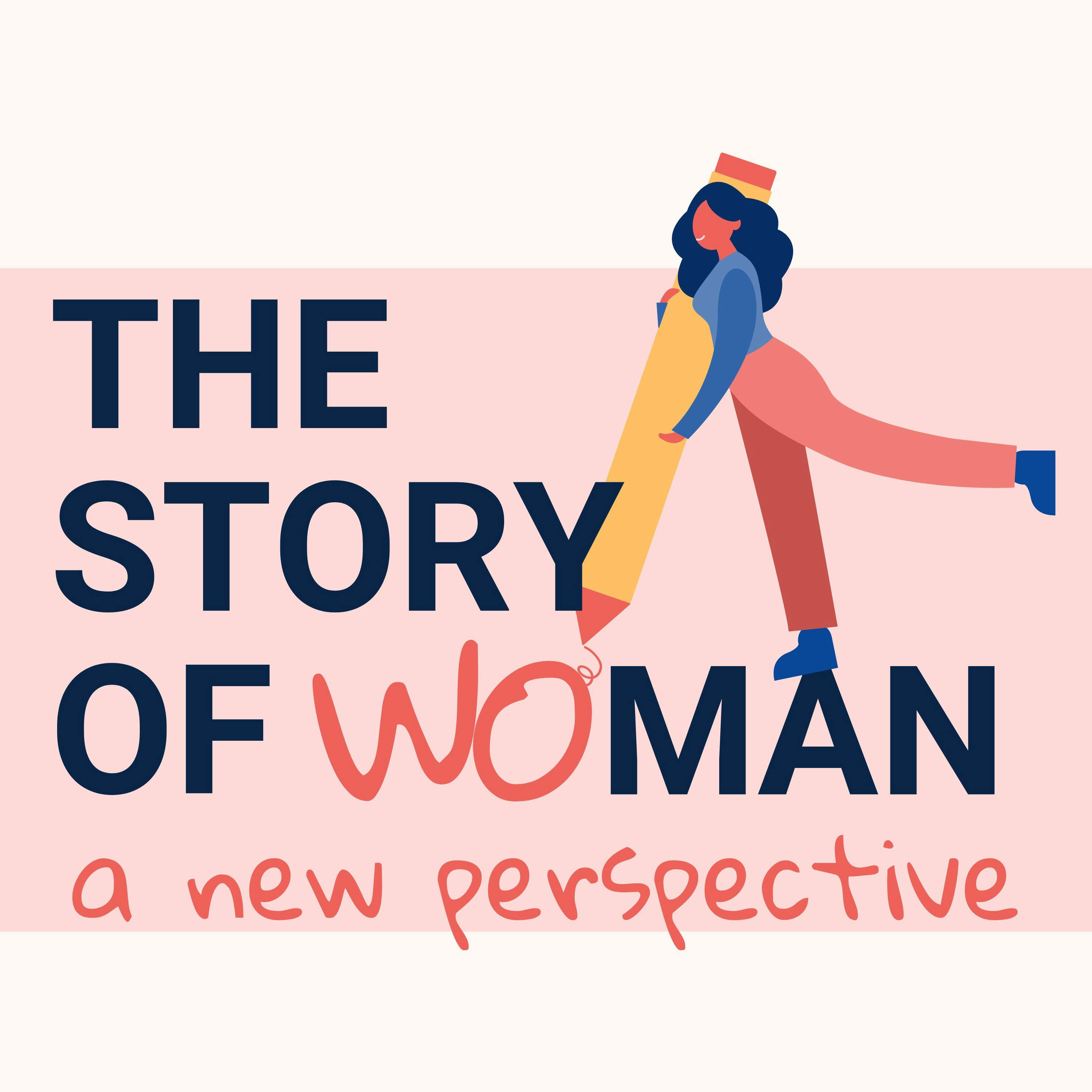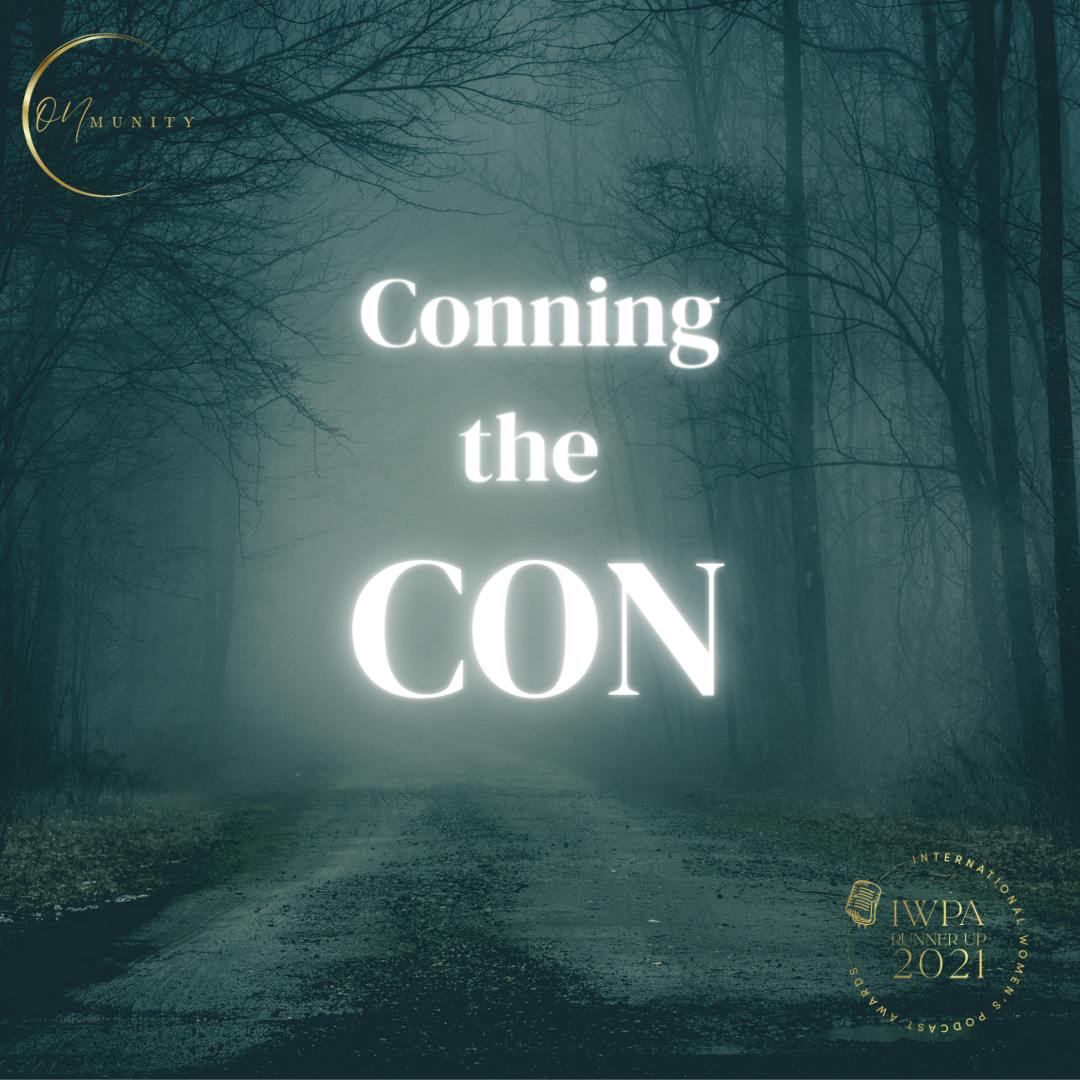.jpg)
Creativity Found: Finding Creativity Later in Life
Real-life stories of finding or returning to creativity in adulthood.
I'm Claire, and I re-found my creativity after a time of almost crippling anxiety. Now I share the stories of other people who have found or re-found their creativity as adults, and hopefully inspire many more grown-ups to get creative.
I chat with my guests about their childhood experiences of creativity and the arts, how they came to the creative practices they now love, the barriers they had to overcome to start their creative re-awakening, and how what they do now benefits their physical, mental and emotional wellbeing.
Want to be a guest on Creativity Found? Send me a message on PodMatch, here
Creativity Found: Finding Creativity Later in Life
Yellow Shed Pottery – patience in clay
Creativity, the learning process, and the mesmerizing world of pottery.
In this bonus episode I’m joined by Creativity Found Collective member Kelly Drewett and friend of Creativity Found Carola Moon, as we visit the pottery studio of fellow Collective member Debbie Page.
You’ll hear about how Debbie makes her moon jars – and what they are – as well as a little pottery history.
We discuss everything from the unique ways people manipulate clay to the often overlooked importance of the table as a creative tool. The power of human hands in shaping clay and eliciting emotion through pottery forms is also explored, leading us to the understanding of how compression can help achieve the perfect texture.
We also start plotting our next Creativity Catchup featuring a few more members and their creative classes.
CreativityFound.co.uk
Debbie Page at creativityfound.co.uk
Kelly Drewett at creativityfound.co.uk
Instagram: @creativityfoundpodcast
Facebook: @creativityfoundpodcast and Creativity Found group
Pinterest: @creativityfound
Twitter: @creativityfoun
Researched, edited and produced by Claire Waite Brown
Music: Day Trips by Ketsa Undercover / Ketsa Creative Commons License Free Music Archive - Ketsa - Day Trips
Artworks: Emily Portnoi emilyportnoi.co.uk Photo: Ella Pallet
Buy arts and crafts techniques books, plus books by some of my podcast guests, from the Creativity Found bookshop
Help me to keep making this podcast at buymeacoffee.com/creativityfound
Want to be a guest on Creativity Found? Send me a message on PodMatch, here
Podcast recorded with Riverside and hosted by Buzzsprout
We have clay objects from at least 30,000 years ago that are identifiably female.
Speaker 2:But also, like you said earlier, it's just you find certain things boring And I think, why not go for whatever you find more stimulating? You know, it's your time, it's your energy.
Speaker 1:It's just fascinating how you can give a pound of clay to 12 people and you'll get 15 different things, and I just find that absolutely fascinating.
Speaker 3:But a lot of people say to me things like, oh, i can't draw, i'll never be able to draw, and things like that. But you could if you practice. If you were going to try and build a website, you'd have to practice, or do it or learn, and it's exactly the same creativity, isn't it? Yeah?
Speaker 4:Hi, i'm Claire, founder of Creativity Found, a community for creative learners and educators, connecting adults who want to find a creative outlet with the artists and crafters who can help them do so with workshops, courses, online events and kits. For this podcast, I chat with people who have found or re-found their creativity as adults. We'll explore their childhood experiences of the arts, discuss how they came to the artistic practices they now love and consider the barriers they may have experienced between the two. We'll also explore what it is that people value and gain from their new found artistic pursuits and how their creative lives enrich their practical, necessary everyday lives.
Speaker 4:In this bonus episode, i'm joined by Creativity Found Collective member Kelly Druitt and friend of Creativity Found, carol LeMune, as we visit the Pottery Studio of fellow Collective member, debbie Page. Kelly lived in France but was visiting the UK and, of course, we wanted to meet up for the first time in real life. Since Kelly could easily get a train from Bristol, where she was staying, to Reading, i knew I had the perfect location for us to meet and have a mini creativity catch-up. In this episode you'll hear about how Debbie makes her moon jars and what they are, as well as a little pottery history plus details of Debbie's teaching. We also start plotting our next creativity catch-up, featuring a few more members and their creative classes. So how do you build Debbie?
Speaker 1:Right, how do I build? I'm a handbuilder so I can throw. I teach throwing. I find throwing boring, so I hand build. So that means I pinch clay, i coil clay, i also roll out slabs, occasionally as well. What's coiling? Coiling is where you get a piece of clay and you roll it into a sausage.
Speaker 3:Oh, and then you can build like that.
Speaker 1:So do you want to have a feel Like instant litter? Some people refuse to take it. fair enough, but anyone who gets it is instantly squishing it, They don't just go they instantly squeeze it, and there is something really fundamental about human beings manipulating what's in their hands, and this is easily manipulatable.
Speaker 3:I'm trying to stop now. I thought I was going to get to head off.
Speaker 1:No no, keep going. So a coil of clay is formed by I try to. This sounds daft, but we have clay objects from at least 30,000 years ago that are identifiably female. It isn't just a blob that someone's got. Oh, there's a fingerprint there. They must have manipulated. They're called the Venuses of Wischendorf, sort of very, very Eastern Europe, germany, hungary sort of area. They're about so big, big head, no face. Obviously they can do faces, i can't do faces.
Speaker 1:I'm with them on that but they've got hair you can see they've got hair, big boobs, big pregnant belly, so obviously female. and there isn't just one. Even if we only had one, that wasn't that person's first rodeo on that piece of clay, they'd done it before, because everything's in proportion. So, 30,000 years ago you did have saber tooth tigers and mammoths running around, even in Central Europe. You know life expectancy 30, 35 And they had the time to look at a human body and go. That's spine tingling stuff to me. But they didn't have tables. So in Africa they actually coil. Yes, Natural.
Speaker 1:You know there is something, whether you believe in sort of you know, cultural memory and all that sort of thing.
Speaker 3:Yeah.
Speaker 1:You know, something really weird can happen when you give someone a piece of clay. It's the same, actually, if you give people a stick. They will Bend it, break off bits, twist it, pull off the bottom. I mean, they're manipulating it As well. So it's not just clay, but you know, clay is up there. So we These days, because we have tables as technology which would freeze people Table is a piece of technology, so you just coil them out and then, as you say, you put them into Mounds. Like that you get them into two halves.
Speaker 3:So you use a mold? I wouldn't just start Anything.
Speaker 1:I mean this, these, this one here I've made. There's two pieces of clay wearing a weighing 160 grams each. I don't need a mold for that size because it fits my hand. Yeah, i'm using clay of 250 grams per half. I need a mold Because my hands are big enough to be, So it's size.
Speaker 1:Yeah and then when you've got the two halves and you stick them together and you blend across the, the drawings, yeah, and then what I do to get rid of all those lumps when you can smooth it over your finger than a stick Takes forever. but going back to my table technology, if I roll it gently, if I roll it gently, you can see all the core, all the lumps and bumps.
Speaker 1:Appearing, yes, disappearing. It is also compressing the clay. Clay works best when it's really squished And although it would have been squished a bit when I was rolling, it squished a bit more when I was Join in the sides. There's nothing like a bit more compression to really make it even Stronger. And then I made this yesterday evening.
Speaker 1:It would have been shrinking Clay shrinks and it means that although it's not airtight, the air pressure in there is a little higher than the air pressure I hear. So when I push I can push a little harder than if it was just a Flat piece of clay and I don't make as much denting. So I can use that and really get rid of all those naughty little lumps and bumps that are happening, and then I can shape it. So you know, my moon jars around, but they are. I'm not bothered if they're Perfectly spherical.
Speaker 3:Yeah, something nice about.
Speaker 1:Yes, yes, the creator, the moon jars come originally from Korea.
Speaker 4:It was more squishy than I was expecting.
Speaker 3:It looks really fine.
Speaker 4:It looks like it's a whole filled thing, which I know it isn't, but even so it comes up lighter and then actually you can feel the movement Yeah.
Speaker 3:In the ball of clay? Oh, yes, how fun, are they? It's what you expect and what it really is.
Speaker 4:It feels like an Easter egg, almost That kind of thing.
Speaker 3:Yes, Yes, just passing a ball of clay around.
Speaker 1:So the Koreans have always been incredibly good potters and in about the 1650s they finally came out from underneath China's yoke and had a big renaissance of cultural craft, arts and things, and they devised ways of throwing porcelain pots that I can't put my arms around. Bear in mind, there's a 20% shrinkage rate on porcelain, so it would have been even bigger. They threw them in two halves and put them together and they've come up with three main shapes that are traditional, spherical, which for some reason this year are more spherical than normal.
Speaker 3:Yeah.
Speaker 1:And these you call the moon jars. These are called moon jars. Originally they were called wait for it, big branding opportunity here in Korea, big jars 1650s. Marketing didn't really kick in Later they started to be called moon because they were white.
Speaker 1:And Koreans also have a cultural influence of the moon. The moon is very important to them And they. I understand that. For me too, i've got that. So they're called moon jars, but they can be spherical. Teardrop speaks for itself. All my favourite wobbly. How wobbly. Wobbly is an official shape. I mean. You know, that's brilliant. It's brilliant for two reasons. First of all, it means I can make moon jars, and they're a bit wobbly, they're still moon jars. Second, a culture that allows for the fact Yeah, that is Yeah, not perfect. Yeah, but it has got to have a. Let me go for it anyway.
Speaker 4:We just need to interject and Karola's going to tell us what her name is.
Speaker 2:My son's name is Moon.
Speaker 3:I didn't know. Oh, that's brilliant.
Speaker 1:So you had to come today. I did. But, you didn't even know, did you?
Speaker 4:I didn't know it was moon jars. It was your friend. You just got done. Just now you can go. No, karola's name is Moon And Karola.
Speaker 2:So it's definitely her wonderful, or the moon's, the moon's alive, the moon's The planet was brilliant.
Speaker 3:See, I'm not very good at getting that very long in the air.
Speaker 1:No, this is the problem with. There is no drop in her clay, if you were. This is the problem that you find they only go so long. You can make pretty much any shape you want from this. Because the air pressure is slightly higher inside. I could tap this into a cone. I could tap this into a square. If I had the inclination at the time, i could make a dodecahedron. Yeah, what's that? 12 sided Okay.
Speaker 1:The best sort of thing, which I'm not going to do because that's, you know, boring. So you know it's a very adaptable technique And I'm teaching this technique is the basis of It's. Obviously it's decorative. It could be a little moon jar. If you make it square, it can be a little pot. You can cut the top off and make it into a lid. You could top the top third off and make it into a cup. You can make it into a sort of teardrop shape and that's really good for things like penguins, yeah, and birds and stuff. You could stick a handle here and a spout there and a lid there and you could go to teapot.
Speaker 1:It's a really adaptable starting point for people to actually start when they're starting down there. Pottery world.
Speaker 4:Yeah.
Speaker 1:Pottery still looks down on hand builders. If you're a sculptor, they understand that. You know you take bits and go and you slap it on. But they do look down on pinch pots, on coiling and stuff.
Speaker 3:So when you call yourself a potter, then that's on the wheel.
Speaker 1:Well, no, i call myself a potter because I work with clay. I make pots, you know. You can take it back to its meaning a potter makes pots But throwers. It's interesting, many handbuilders can throw a bit Really good. Throwers can rarely hand build. It really is. I mean, i can remember going and seeing a very famous potter called Matthew Blakey. He did a brilliant project. He went to every county. He got funding to do this. He went to every county in England and Wales and took clay and made a pot and a glaze from that clay.
Speaker 3:Put it in a big touring exhibition. Brilliant idea, love it.
Speaker 1:Yeah, and he came to do a talk about Halfway Through and he was telling us about this particular clay fad which was awful to throw with. So I said, well, why don't you hand build it? And his face was like I'd asked him to kill his firstborn. I'm only suggesting another alternative making method, you know, really just lighten up. He could have said well, no, i want them all thrown, because then they're all thrown, yeah they're all hand, but yeah. Yeah, But it was like really And it's real shame because this came first. Yeah.
Speaker 2:This came first.
Speaker 1:You know, throwing was invented about 5,000 years ago.
Speaker 3:You wouldn't get those shapes with throwing You would, you would And I could get those shapes.
Speaker 1:I can get those shapes, That's not a problem. It's just how I choose not to work. It's the same way you say you work occasionally in Equinix. You might use work something else. You've got to use something else. You know our creative outlets have to take different formats because we're all different people And mine is using clay without technology. I mean, I have turned up to a demonstration and I'd forgotten my tools. All I had was my chopstick and I made teapots all day just using my chopstick. So you can make really technical, highly technical things with very, very little. I didn't even have to have the chopstick. I could have made it without.
Speaker 3:But now we know why David was chopstick.
Speaker 1:The hair came first, not the pot.
Speaker 2:But also, like you said earlier, it's just you find certain things boring And I think why not go for whatever you find more stimulating? You know, it's your time, it's your energy, absolutely.
Speaker 1:Absolutely. It's just fascinating how you can give a pound of clay to 12 people and you'll get 15 different things, and I just find that absolutely fascinating.
Speaker 2:Even now. I've got a little bowl, We've got a little square. I put mine down. What is that? A sandwich, it's a I forget.
Speaker 1:It could be a little bit. you know I've seen people try and you know a couple hundred quid of.
Speaker 4:Yes, it's abstract.
Speaker 1:It's actually Beauties in the heart of the heart. I'm still learning how to work this stuff, and I've been playing with it since I was 13 years old. Okay, it's been absolutely Forever learning, forever, learning.
Speaker 1:When I'm teaching I get I do get a little bit niggled when people want to be able to to master something straight away. They don't have the patience. You know, when I tell them it took me three years to learn to throw And, believe me, i was highly motivated to learn to throw. I then went and did a city and girls diploma and came out a mould making hand builder.
Speaker 3:Yeah.
Speaker 1:With craft and, i'm sure, art, paint, paint, you know, brushes and pencils and things you have to put the time in to get it back, don't you.
Speaker 2:There is something about, i think. Sometimes people get impatient because they don't enjoy the process, they don't enjoy the doing, and I think that is like Either you have that interest or that it somehow stimulates you, that you want to like continue doing it, or if not, then yeah, it's not your thing, you know.
Speaker 3:But then don't make it wrong that you're not an expert after day one, yeah, But a lot of people say to me things like oh, i can't draw, i'll never be able to draw, and things like that. Well, you could if you practice. If you were going to try and build a website, you'd have to practice or do it or learn, and it's exactly the same creativity, isn't it?
Speaker 1:Yeah, But the only thing we never have to learn to do is to breathe. That's instinctive. We have to learn to walk. We have to learn to feed ourselves, to brush our teeth, comb our hair, everything. We have to learn how to do it. So you know, give yourself a break, sort of thing. When I teach you, i don't. If someone comes in and I want to throw, i get a bit strict and say no, i want you to hand build first week, because it's going to be six, seven weeks before you get anything that you want to keep. I'll want you to keep it that way, because at least then they can take something home with them.
Speaker 3:Yes, achievement.
Speaker 1:On week three or four, whereas they will not be taking anything home.
Speaker 3:the first time if they're throwing. How often do you do the workshops?
Speaker 1:Well, i teach regularly. I teach at Woodley Hill House, which is part of Bracknant Wokium College, i teach in Reading And I teach at East Hendred It's a little village just over here, 34 outside Oxford So, and they're sort of very general. There'll be some hand builders, there'll be some throwers in there, And of varying amounts of time, so for complete beginners to people who've been potting for 20 years. So a whole range of interests and skills and sort of making methods. But then I do one day workshops at a couple of different venues And I do those sort of when I'm not doing my general term time stuff because I was in the day basically. So holiday times.
Speaker 3:I'm going to try and get one of those workshops at some point. Well, i will, harder living in France, but if you're doing, one day ones.
Speaker 1:There are potters in France that will do them, but they might just do them in French. Yeah, second language is quite difficult, but anytime you've got anything technical there, it must sort of make it.
Speaker 3:It's just less enjoyable because you're thinking about the language as well. As well as the.
Speaker 4:I think there are one off ones when you're doing something in the holidays on the chat group and the membership, how long?
Speaker 3:are you here for Only until Tuesday? Oh right, Okay, so.
Speaker 1:I've got a thing at Ardington on the 20th of July. Can't remember what I'm doing, might be teapots.
Speaker 4:I don't know what you're doing, Jimmy.
Speaker 3:I feel like I did read you were doing a teapot one too. Yeah.
Speaker 4:Awesome. We should try and tie it in with a printmaking with Jennery as well. Who could you have quite?
Speaker 3:Yeah.
Speaker 4:That would be amazing, creative to follow teachers.
Speaker 3:Yeah project.
Podcasts we love
Check out these other fine podcasts recommended by us, not an algorithm.

Multispective
Jennica Sadhwani
Podcasting 2.0 in Practice
Claire Waite Brown
The Adult Ballet Studio
Elizabeth Blosfield
The Late Bloomer Actor
David John Clark
In Ten Years Time
Tricia Duffy
Exhibitionistas
Joana P. R. Neves
More Than Work
Rabiah Coon
The Story of Woman
Anna Stoecklein
Dreamful Bedtime Stories
Jordan Blair
Conning the Con
Evergreen Podcasts & Sarah Ferris Media
Watching Two Detectives
Evergreen Podcasts & Sarah Ferris Media
Podnews Weekly Review
James Cridland and Sam Sethi


